Abstract
Definitive confirmation or denial of the hypothesis that thyrotoxic hearts are supersensitive to catecholamines has been difficult to obtain, largely because secondary alterations in neural and humoral factors that occur after thyroid administration in vivo may obscure the primary changes induced by the hormone on the myocardium itself. To study the direct action of thyroid hormone apart from secondary factors, thyrotoxicosis should be induced in isolated hearts in vitro, but the slow onset of thyroid action plus the rapid deterioration of conventional in vitro preparations have precluded such experiments.
Recen'ly a method was developed for maintaining intact, spontaneously-beating hearts from late-fetal mice in organ culture for several weeks. When 5 × 10−7 to 5 × 10−6m l-triiodothyronine is added to the culture medium arrhythmias and or tachycardia gradually appear, just as in thyrotoxicosis in vivo. Accordingly, these “thyrotoxic” hearts were used in the present experiments to test for altered responsiveness to norepinephrine. Dose-response curves to norepinephrine were identical for hearts maintained for 3 hr in triiodothyro-nine-treated or control medium. After 2 days, however, the curve was shifted to the left in triiodothyronine-treated hearts. Thus, 10−8m norepinephrine increased the atrial rate by 20±6.1 (sem) beats/min in hearts exposed to 5 × 10−6m triiodothyronine and by 1±3.0 in control hearts (P < 0.02); 10−7m norepinephrine raised the rate by 79±22.3 in treated hearts vs. 17±9.8 in controls (P < 0.05). At maximal doses (10−6m norepinephrine), increases were identical. In addition, norepinephrine (10−8-10−6m) induced arrhythmias in 56% of treated hearts vs. 14% of controls (P < 0.01). Thus, in a precisely controlled environment free of differences in neural and humoral factors, triiodothyronine can act directly on the fetal mouse heart to enhance sensitivity to norepinephrine.
Full text
PDF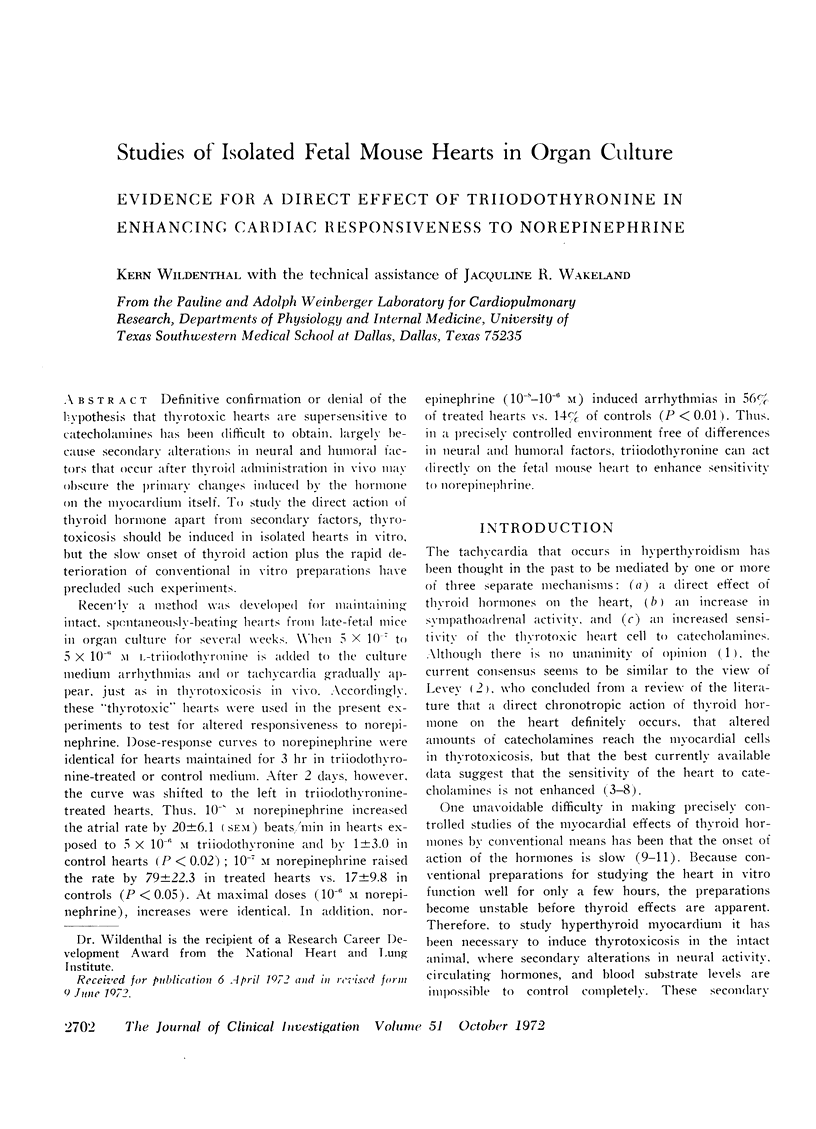
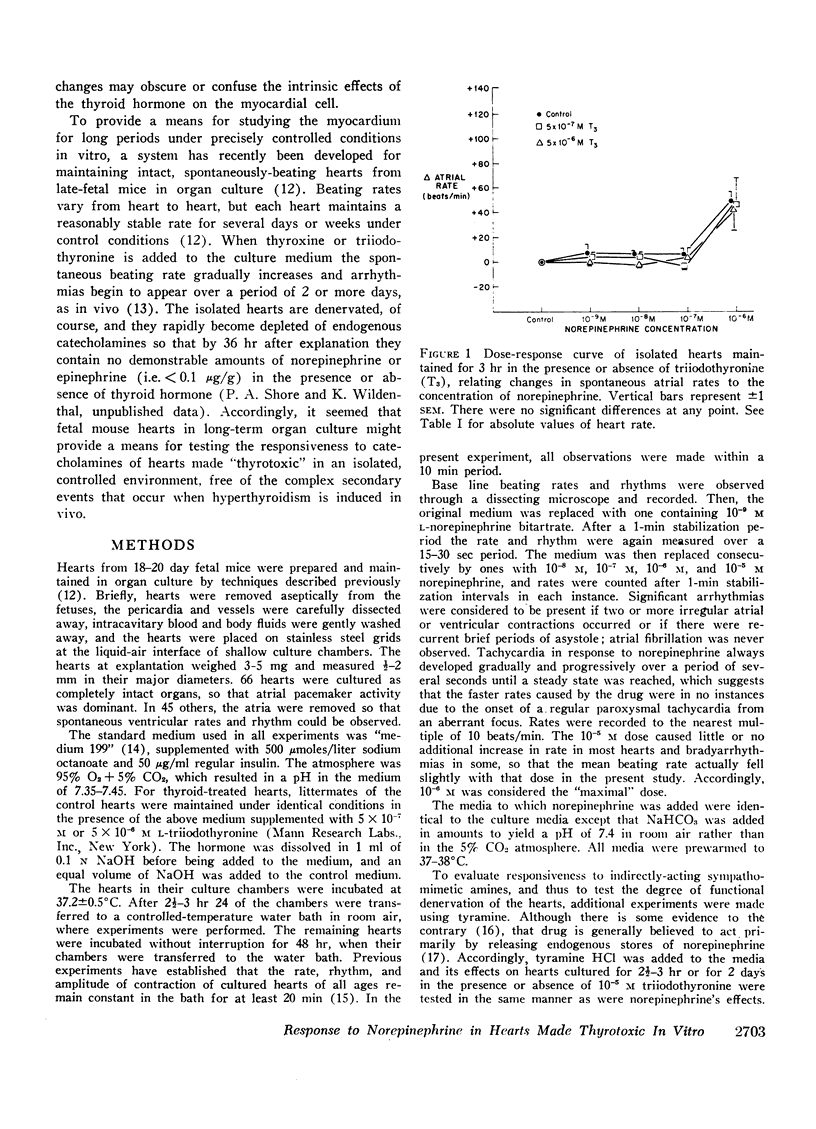
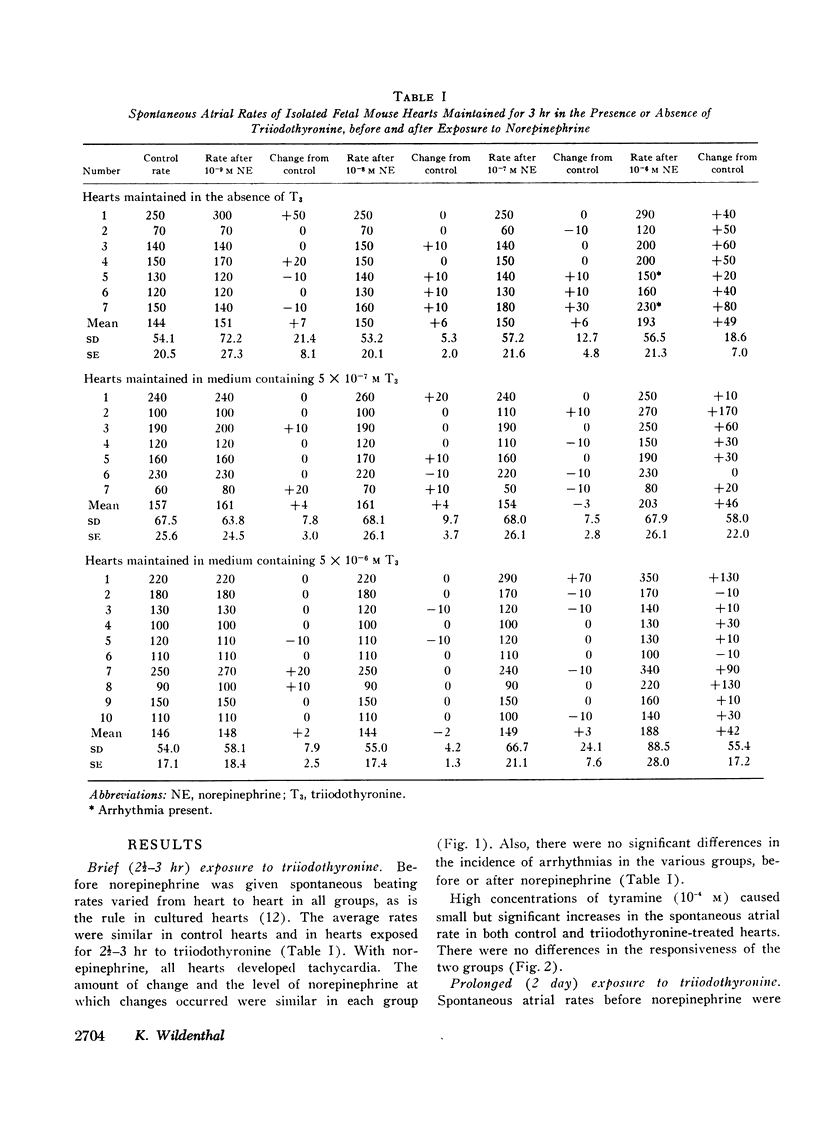
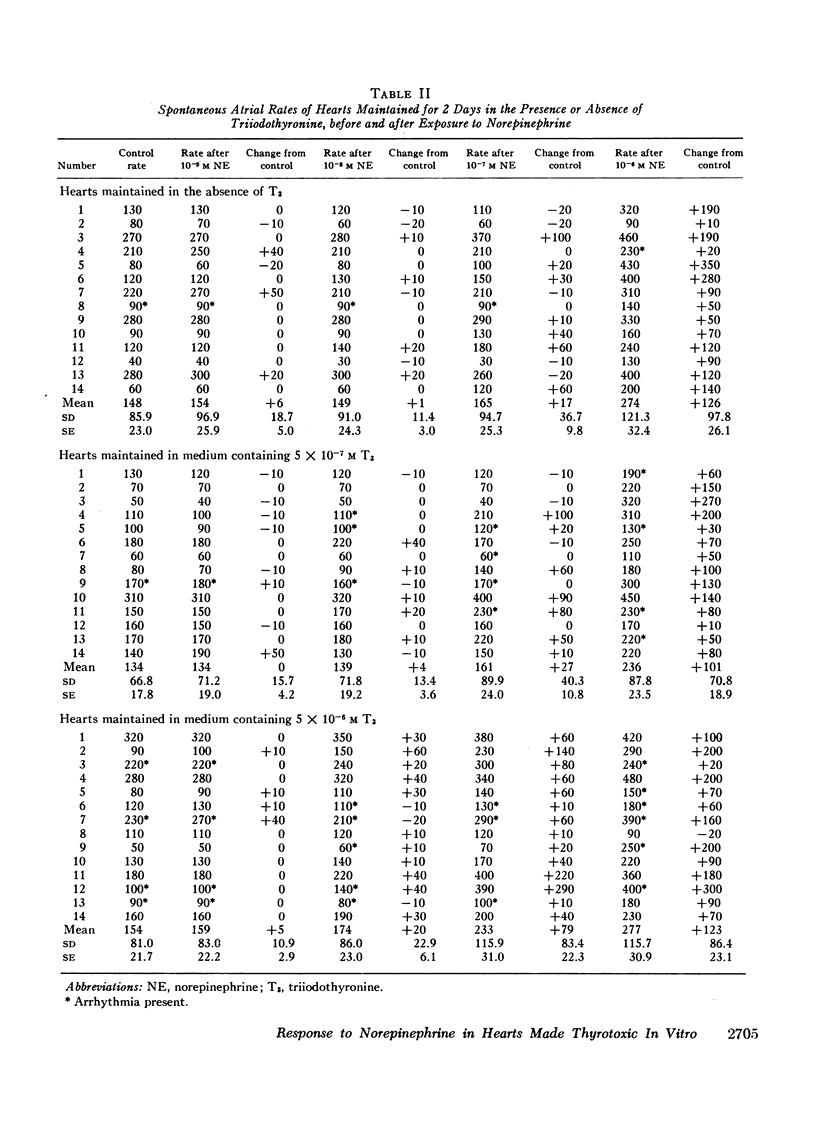
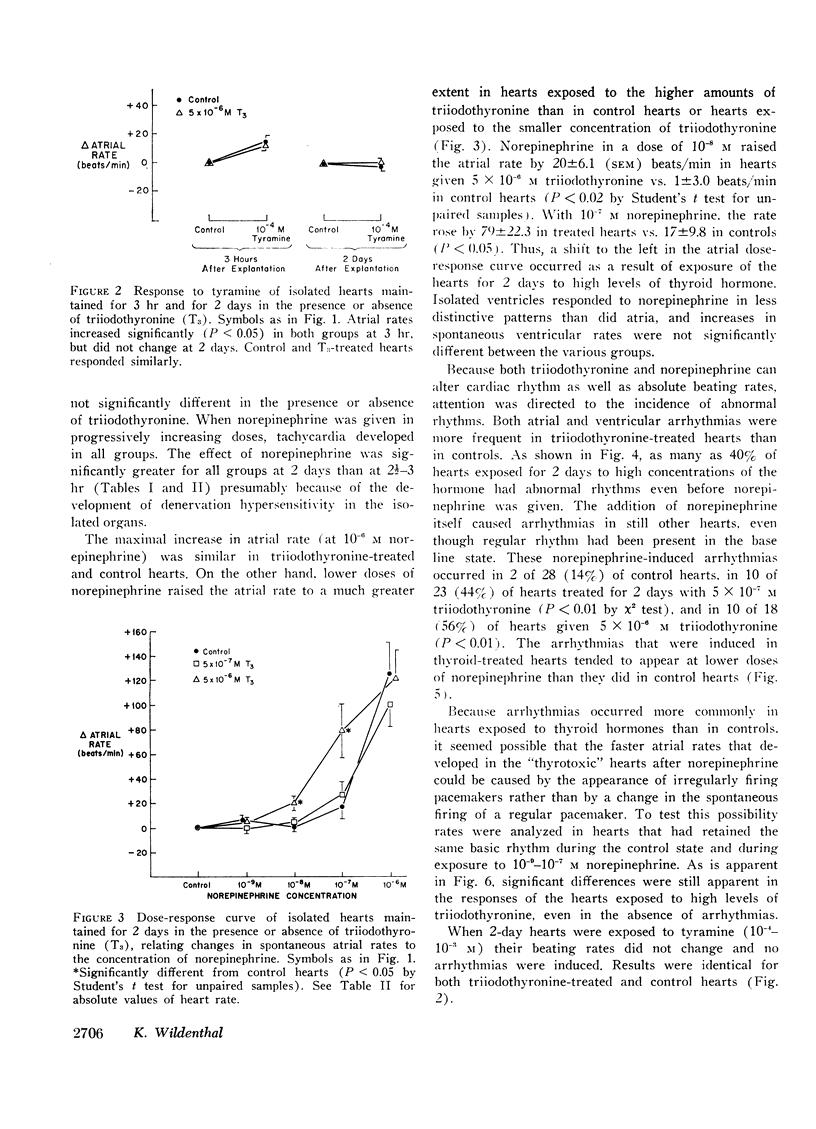
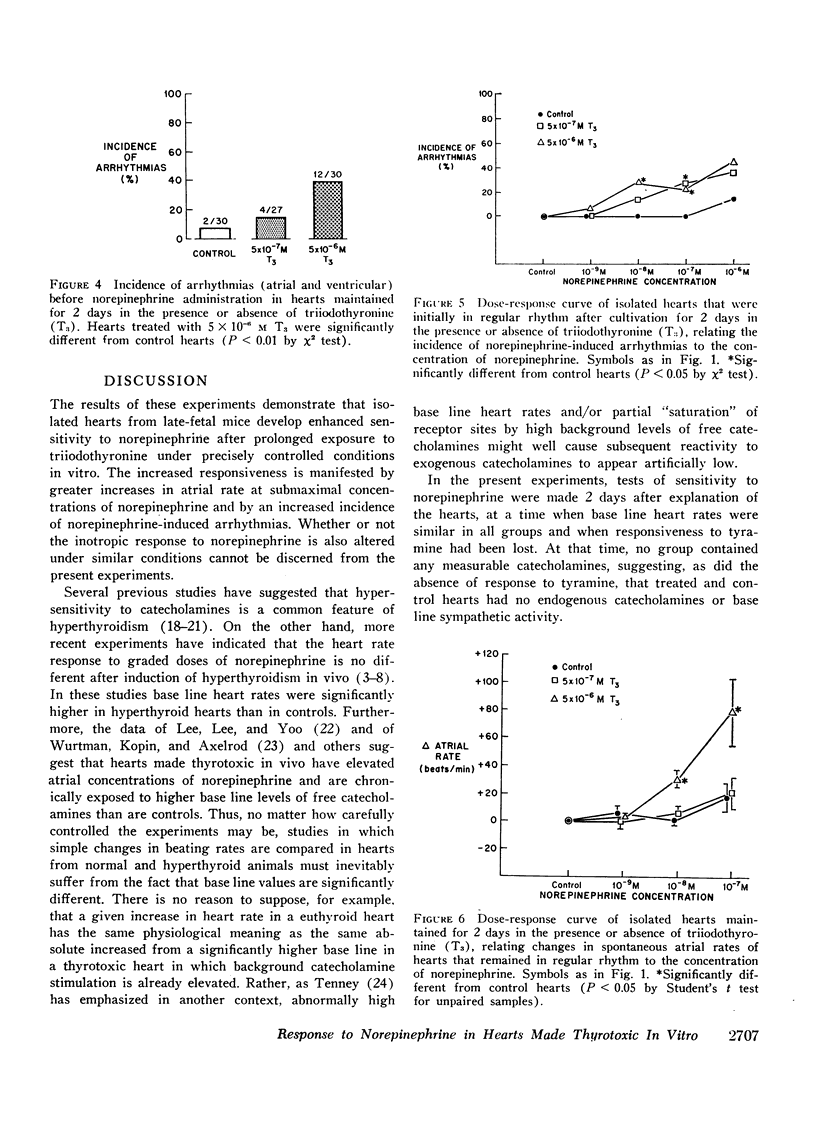
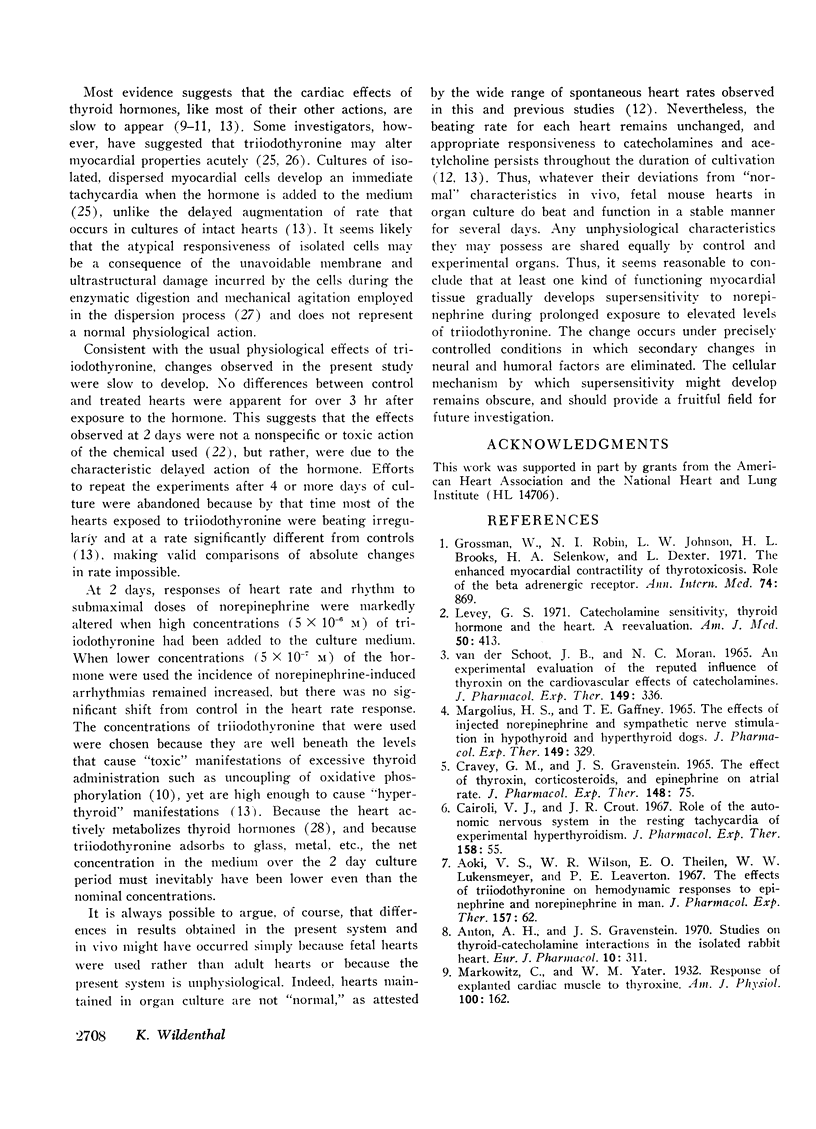
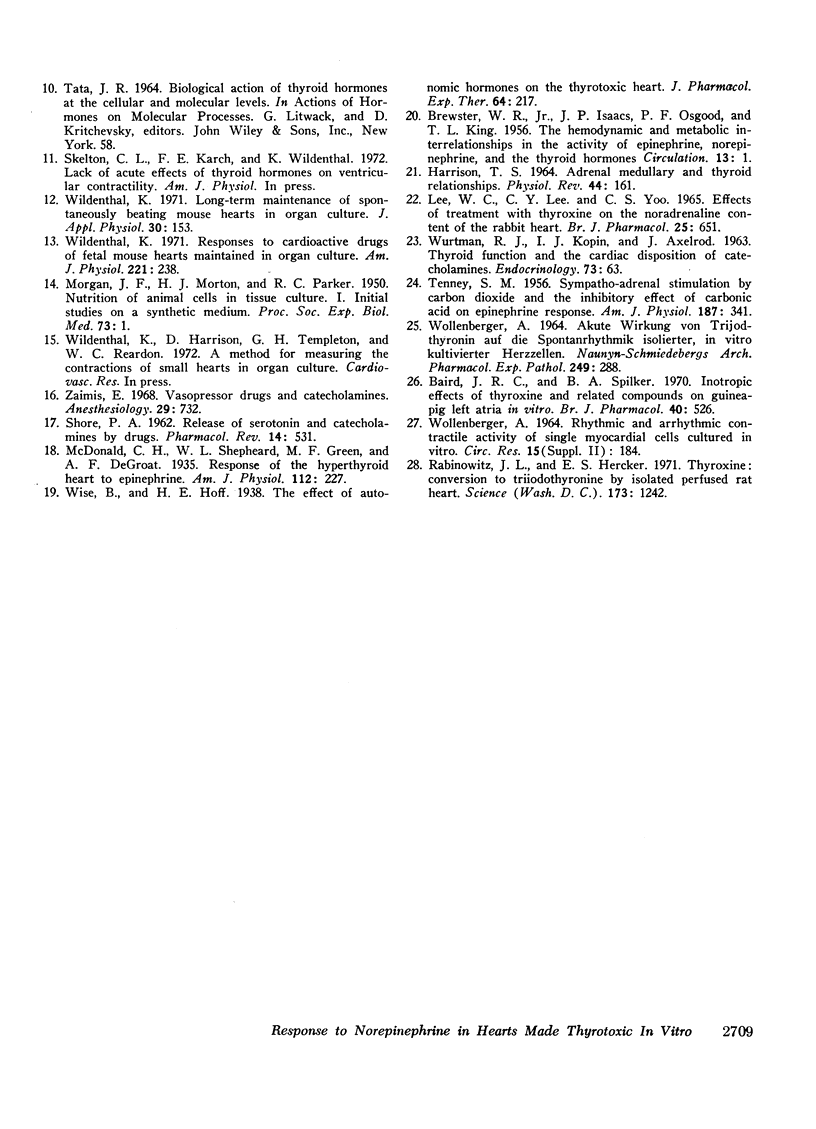
Selected References
These references are in PubMed. This may not be the complete list of references from this article.
- Anton A. H., Gravenstein J. S. Studies on thyroid-catecholamine interactions in the isolated rabbit heart. Eur J Pharmacol. 1970;10(3):311–318. doi: 10.1016/0014-2999(70)90200-1. [DOI] [PubMed] [Google Scholar]
- Aoki V. S., Wilson W. R., Theilen E. O., Lukensmeyer W. W., Leaverton P. E. The effects of triiodothyronine on hemodynamic responses to epinephrine and norepinephrine in man. J Pharmacol Exp Ther. 1967 Jul;157(1):62–68. [PubMed] [Google Scholar]
- Baird J. R., Spilker B. A. Inotropic effects of thyroxine and related compounds on guinea-pig left atria in vitro. Br J Pharmacol. 1970 Nov;40(3):526–527. doi: 10.1111/j.1476-5381.1970.tb10636.x. [DOI] [PMC free article] [PubMed] [Google Scholar]
- CRAVEY G. M., GRAVENSTEIN J. S. THE EFFECT OF THYROXIN, CORTICOSTEROIDS, AND EPINEPHRINE ON ATRIAL RATE. J Pharmacol Exp Ther. 1965 Apr;148:75–79. [PubMed] [Google Scholar]
- Cairoli V. J., Crout J. R. Role of the autonomic nervous system in the resting tachycardia of experimental hyperthyroidism. J Pharmacol Exp Ther. 1967 Oct;158(1):55–65. [PubMed] [Google Scholar]
- Grossman W., Robin N. I., Johnson L. W., Brooks H. L., Selenkow H. A., Dexter L. The enhanced myocardial contractility of thyrotoxicosis. Role of the beta adrenergic receptor. Ann Intern Med. 1971 Jun;74(6):869–874. doi: 10.7326/0003-4819-74-6-869. [DOI] [PubMed] [Google Scholar]
- HARRISON T. S. ADRENAL MEDULLARY AND THYROID RELATIONSHIPS. Physiol Rev. 1964 Apr;44:161–185. doi: 10.1152/physrev.1964.44.2.161. [DOI] [PubMed] [Google Scholar]
- Lee W. C., Lee C. Y., Yoo C. S. Effects of treatment with thyroxine on the noradrenaline content of the rabbit heart. Br J Pharmacol Chemother. 1965 Dec;25(3):651–657. doi: 10.1111/j.1476-5381.1965.tb01789.x. [DOI] [PMC free article] [PubMed] [Google Scholar]
- MORGAN J. F., MORTON H. J., PARKER R. C. Nutrition of animal cells in tissue culture; initial studies on a synthetic medium. Proc Soc Exp Biol Med. 1950 Jan;73(1):1–8. doi: 10.3181/00379727-73-17557. [DOI] [PubMed] [Google Scholar]
- Margolius H. S., Gaffney T. E. The effects of injected norepinephrine and sympathetic nerve stimulation in hypothyroid and hyperthyroid dogs. J Pharmacol Exp Ther. 1965 Sep;149(3):329–335. [PubMed] [Google Scholar]
- Rabinowitz J. L., Hercker E. S. Thyroxine: convesion to triiodothyronine by isolated perfused rat heart. Science. 1971 Sep 24;173(4003):1242–1243. doi: 10.1126/science.173.4003.1242. [DOI] [PubMed] [Google Scholar]
- SHORE P. A. Release of serotonin and catecholamines by drugs. Pharmacol Rev. 1962 Dec;14:531–550. [PubMed] [Google Scholar]
- TENNEY S. M. Sympatho-adrenal stimulation by carbon dioxide and the inhibitory effect of carbonic acid on epinephrine response. Am J Physiol. 1956 Nov;187(2):341–346. doi: 10.1152/ajplegacy.1956.187.2.341. [DOI] [PubMed] [Google Scholar]
- WOLLENBERGER A. AKUTE WIRKUNG VON TRIJODTHYRONIN AUF DIE SPONTANRHYTHMIK ISOLIERTER, IN VITRO KULTIVIERTER HERZZELLEN. Naunyn Schmiedebergs Arch Exp Pathol Pharmakol. 1964 Oct 23;249:288–294. doi: 10.1007/BF00246964. [DOI] [PubMed] [Google Scholar]
- WOLLENBERGER A. RHYTHMIC AND ARRHYTHMIC CONTRACTILE ACTIVITY OF SINGLE MYOCARDIAL CELLS CULTURED IN VITRO. Circ Res. 1964 Nov;15:SUPPL 2–2:184+. [PubMed] [Google Scholar]
- WURTMAN R. J., KOPIN I. J., AXELROD J. Thyroid function and the cardiac disposition of catecholamines. Endocrinology. 1963 Jul;73:63–74. doi: 10.1210/endo-73-1-63. [DOI] [PubMed] [Google Scholar]
- Wildenthal K. Long-term maintenance of spontaneously beating mouse hearts in organ culture. J Appl Physiol. 1971 Jan;30(1):153–157. doi: 10.1152/jappl.1971.30.1.153. [DOI] [PubMed] [Google Scholar]
- Wildenthal K. Responses to cardioactive drugs of fetal mouse hearts maintained in organ culture. Am J Physiol. 1971 Jul;221(1):238–241. doi: 10.1152/ajplegacy.1971.221.1.238. [DOI] [PubMed] [Google Scholar]
- Zaimis E. Vasopressor drugs and catecholamines. Anesthesiology. 1968 Jul-Aug;29(4):732–762. doi: 10.1097/00000542-196807000-00020. [DOI] [PubMed] [Google Scholar]
- van der Schoot J. B., Moran N. C. An experimental evaluation of the reputed influence of thyroxine on the cardiovascular effects of catecholamines. J Pharmacol Exp Ther. 1965 Sep;149(3):336–345. [PubMed] [Google Scholar]


